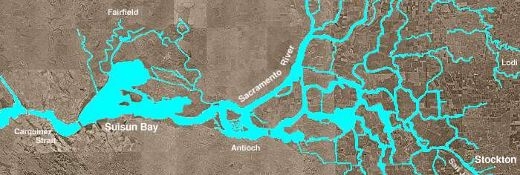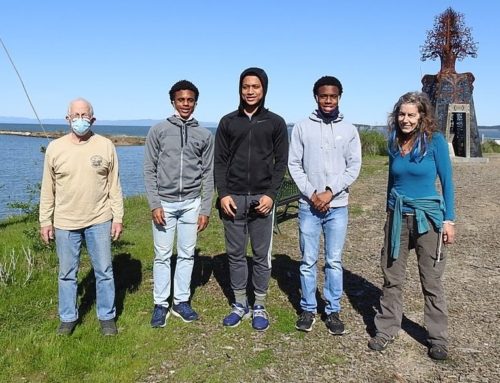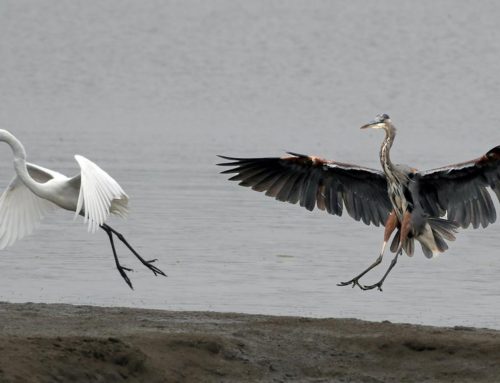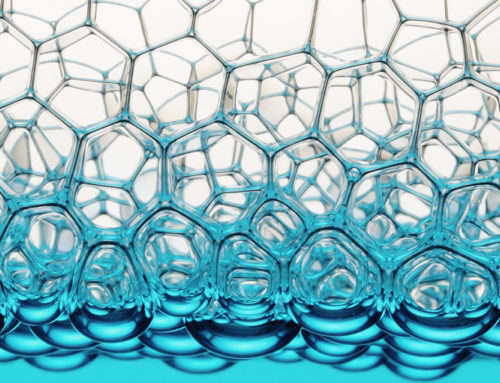In California, the 2011-2017 drought had some stunning silver linings, notably a more acute personal awareness of water use. The impacts of drought and climate change yielded scarce water flows and depleted groundwater supplies that focused people’s attention on cutting back on water use. People were themselves experiencing unusual heat, seeing the extensive tree death in our Sierra Nevada and beyond, breathing in the early-to-late smoke of forest consuming fires, finding their gardens dry each day, even with the usual watering, and paying higher prices for some foods.
This leads us to ask, how does water connect us to our daily lives? Answering some simple questions like the ones below can help stir people into awareness.
Image Credit: Wholly H2O
And most recently, “Why do you conserve water?” Even people who live in places where water has been in abundant supply can benefit from answering this question.
Image Credit: Wholly H2O
During California’s five-year drought, the media, water agency mailings and signs on the roadways all pointed over and over to the need to conserve. Local listserves and cafés filled up with conversations about water costs, water quality, water failures and what water saving programs are available through local water agencies.
This led to a cumulative statewide water savings of 22.5 percent from June 2015 through February 2017 compared to the same months in 2013. In Feb 2017, the statewide residential water use average was 57.5 gallons per person per day, the lowest ever reported for the state. Only two years ago, that number was rejected at a meeting with multiple CA water agencies as a near impossible target.
Image Credit: James Kirkus-Lamont
On the state-wide level, California’s water legislators mandated that California’s 410 water agencies adopt new water use standards for all urban water use and provide monthly data including water usage, level of conservation achieved, and any enforcement efforts. Groundwater withdrawals, which have led to overdraft that have caused some areas of the Central Valley to subside up to two feet in the last 18 months, have resulted in the Sustainable Groundwater Act, with more groundwater legislation in the pipes. The state established additional prohibitions on water waste, which were added to existing permanent prohibitions of watering lawns, washing pavement, and cars, and using ornamental fountains that are not recirculating, outdoor watering during or within 48 hours after a rain event; hosing down a sidewalk instead of using a broom or a brush; and overwatering a landscape to where water is running off onto the sidewalk or into the gutter.
At least for a moment, the signs along I-5 that read “Congress Created the Dust Bowl” had to take an embarrassing step back. And perhaps even a look in the mirror. For even with a loss of 1/3 of the state’s water, our economy nonetheless increased by 10 percent during the drought years, and the agriculture industry earnings gained at least 16 percent.
Sign along California Interstate 5
Seemingly overnight, people started seeking out water reuse options of their own accord. Phones rang off the hook in the Wholly H2O office with individuals seeking rainwater and graywater systems. The drought began to give life to a conscious ethic of water conservation and reuse in California.
This past year, from July 2016 – May 2017, we’ve had a helluva rainy season. In Oakland where I live, it’s rained 38 inches. That’s 158 percent of our “normal” annual rainfall! Sierraville, a town bordering the Yuba River and by the Pacific Coast Trail in Northern California, has received 257 percent more than their “normal” rainfall. Even downtown LA can claim a reward at the high rainfall table with 158 percent more than their yearly average. To which I say, hallelujah for large rain cisterns, berms and swales, and rain gardens at my house which kept most of the 84,374 gallons of rain that fell on my property infiltrated into my soil rather than becoming stormwater.
With most reservoirs, lakes, and lakes brimming over with rainwater, and with 196 percent of our normal snowpack on April 7, 2017, Governor Brown declared the end of this most recent California drought in just about the entire states, excepting Fresno, Kings, Tulare and Tuolumne counties. “This drought emergency is over, but the next drought could be around the corner…Conservation must remain a way of life,” he said.
To support this new mandate, five state agencies published, Making Water Conservation a California Way of Life. According to Felicia Marcus, chair of the State Water Board, the plan’s “fundamental premise is that efficient water use helps all of California better prepare for longer and more severe droughts caused by climate change.”
On April 26, 2017, in response to the Governor’s declaring the end to the drought, the State Water Board revoked water suppliers’ stress test which required them to prove they have “sufficient supplies to withstand three years of continuous drought or take additional measures that include mandatory conservation targets.” (State Water Board Announcement, July 6, 2016). At the same time, the Water Board is keeping in place monthly reporting of water use by water agencies and the prohibitions against wasteful practices (find them here on Page 2). So we see a loosening of the regulatory belt for water agencies while keeping conservation rules intact for the public. Many water agency’s incomes suffered greatly during the drought as they were increasing conservation rebates and incentives and customers were rightfully using less water, leading them to be quite vocal in their opposition to maintaining previously required conservation targets. Their annual costs for infrastructure upgrades remains regardless of drought.
Let’s pause to ask again, why do you conserve water? Is it primarily because we fear of impacts from droughts and climate change? Are those who live in water-rich areas off the hook when it comes to conservation and reuse? My answer is, “No, absolutely not.” Tying water conservation to drought can yield beneficial but perhaps short-sighted and short-lived changes in behavior in legislators, water managers, and water users. Although it is generally true that with every “disaster” comes long-term behavioral changes. But has this recent drought disaster lead us to the hefty lifestyle changes that come with making our acute water consciousness a way of life?
Image Credit: World Bank Photo Collection
In my mind, we conserve water first and foremost because we deeply acknowledge and respect water for being a wildly unique molecule. With just six of those molecules together, a drop of water can take shape. And from that drop of water, our lives and those of all life on the planet, emerge and are sustained. The water has made this planet blue for at least 4.4 billion years, the same molecules of water being cleaned and dirtied as they recycle through the processes of the water cycle. You could be drinking a molecule that was once dinosaur pee, a tear of Cleopatra or perspiration of Sitting Bull. We conserve water from a basic gratitude for what water gives us every day.
Image Credit: Pimthida
We conserve water for the health of the natural water systems, which leads to the health of humans and all the other members of 8.7+ million species on the planet. We conserve water because our urban water often comes from remote rivers a hundred or more miles away from where we live, rivers that we take up to 80% of the water out of the river for use, come rain or come shine. Our bodies are made 55-65%, so when we drink those rivers from our taps, if you live in a place like San Francisco, you can say, I am made of the Tuolumne River.
Wholly H2O What’s On Tap sticker
This begs the question, if we take up to 80% of a river’s natural unimpaired flows out of the river for human use, what are the chances for long-term survival of that watershed over a prolonged time? This question is highlighted by the State Water Resources Control Board (SWRCB)’s current effort to increase the unimpaired flows in three Northern California rivers (Tuolumne, Merced, Stanislaus) through the Draft Substitute Environmental Document. The current active battle over setting these new standards for leaving at least 40% of the river flow in the river is not about the survival of one or two fish species on one hand and 1,110,000 acres of almond trees on the other, as some believe. The foundation of this battle is about long-term ecosystem health, and a river system supported by our actions. Entire ecosystems are needed to support life on the planet as it currently configured. Remove keystone species such as salmon and smelt and the entire biological system is threatened with collapse. And, there goes your river’s watershed health and your usable river. Being respectful of water means not just being respectful of each drop of water, but also of the ecosystem supporting that part of the effective water cycle.
Image Credit: Satish J
We also conserve water because we’ve been depleting the 20,000-year-old groundwater in the Central Valley to such a degree that some places in the Central Valley have sunk as much as 2 feet in the last 18 months. With or without droughts, the Central Valley’s groundwater storage has been overdrafted for more than a hundred years and that trend upticks during times of drought. After all, agricultural water use accounts for 80% of all California water use. And while almonds may not use more water than other nuts, as the commercials for the CA Almond Growers Association claim, no other fruit or nuts takes this much acreage and uses this much water as a single crop. The desire to maintain their water rights keep some farmers using wasteful forms of flood irrigation, rather than switching to targeted plant irrigation and including mulch and ground covers. Luckily, we are seeing a trend of many farmers going big with water conservation by using demand-based and micro irrigation systems.
Image Credit: USGS
Actively engaging in water conservation, whether turning down the tap flow when washing dishes, recirculating industrial steam as recycled water or installing rainwater and graywater systems or adopting a public storm drain to keep clear of trash, tends to inspire further action. Perhaps someone puts a bucket in their shower to catch heat-up water. Suddenly they are watching as their water use, and therefore their water bill, drops each month, inspiring them to take further action to only wash full loads of dishes and clothing or to limit shower time. At the Metropolitan Water District in LA, they have noticed that 70 percent of those who installed rainwater cisterns went on to make changes in their landscape to make the most of that captured water. Once you’re on the trail of actions taken out of respect for water, it’s damn hard to stop. Conservation becomes a thrill, a game of “how low can I go?”.
When I first thought to look at my water bill in 2010, I found we were using almost 100 gallons per person in my house. Within a few years, we were down to 20 gallons per person per day. We began to pay attention to the level of tap flow, adding aerators to each tap, using buckets in the shower and kitchen sink for heat up and rinse water, adding a laundry to landscape graywater system and washing full loads of laundry. Outside, in the midst of the recent drought, I was digging up drought tolerant gardens and replacing them with more water intensive food growing gardens because I have 2000 of rainwater storage. I can grow more food and not ask a single drop more from the Mokelumne River, my SF East Bay water source.
Oakland rain-driven spring food, wildflower and perennial garden
Now, back to the question, “Why do you conserve water?”, even for those of us who live in places of relative water abundance. New York City, not particularly known for its droughts, has launched a program to reduce demand by supplying grant funds for single building or district level water reuse projects. In Lebanon, Indiana, also not know for drought, is bringing reclaimed water into their supply portfolio. An elementary school in Pennsylvania has installed a Living System’s onsite water recycling unit.
Internationally, Australia managed its long drought by focusing on water reuse, with 21.5% of the nearly 24 million people now utilize rainwater harvesting. With the persistence of lower rainfall since the mid-1990s, Australia has instituted long term solutions of rainwater harvesting and graywater reuse on multiple scales so they are more in tune with the natural flow of the water cycle. We conserve water because it is so damn easy to capture rainwater, and with just 1000 square feet of roof space and one inch of rain, you can harvest 550 gallons. We conserve water because up to 80 percent or more of our indoor potable water use can be reused as graywater. Capturing rain, infiltrating it on site, reusing it as graywater on site, reducing stormwater, reducing demands on rivers and groundwater.
California is, by some counts, the most hydrologically altered landscape in the country due to our history of building big dams and enormous water conveyance systems. We have a long way to go in achieving localized water reuse. But, as we achieve a personal respect and awareness of water in our daily lives, as well as being aware of the added pressures that climate change and droughts are part of our present and future, both large-scale and decentralized approaches to water conservation and reuse to will truly become a way of life. It’s time to walk more softly on our planet.
Image Credit: Fox Grom








Great post and update on the Golden (with maybe a little green sheen now) State. Please don’t forget the “20/80 rule of conservation”, i.e., that 20 percent of people conserve water because they are paying attention and want to do the right thing while 80 percent conserve water if and only if they are compelled in some way. The most obvious way to compel them is NOT via regulations or subsidies on low flush toilets, but in higher water prices, which I have advocated over the past decade.
Higher prices need not hurt the poor, etc., if they are managed correctly. Here’s a suggestion: http://www.aguanomics.com/2015/04/how-to-price-water-for-conservation-in.html
Great article, and so much needed! As a northern California-based rain barrel company, we really noticed when the public “lost interest” in water conservation about a year ago. We need more messaging like this to help folks understand that water conservation is part of a holistic ecology – not just something we do in response to drought. I will share widely!
[…] A version of this op-ed first appeared on on Wholly H2O. […]
[…] A version of this op-ed first appeared on on Wholly H2O. […]
You omit that conserving water results in municipal water agencies and private regulated water companies having not enough revenue to meet fixed costs, leading to higher water rates. There is a price to pay for conservation but you don’t want to report that. Conservation is often quoted as the cheapest drought policy but that is only because it never factors in the higher water rates. More fake news.